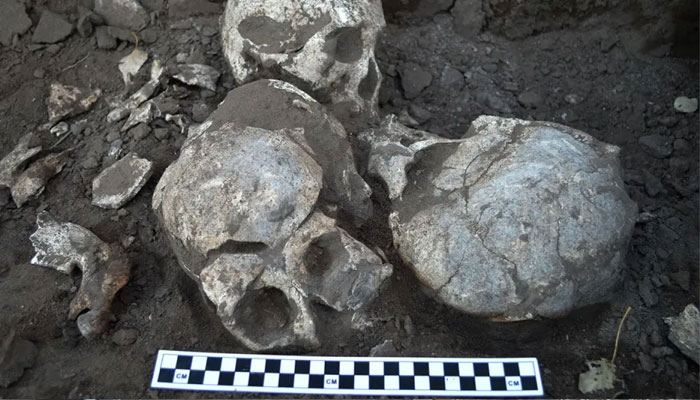Chinese grave with headless skeletons reveals world’s ‘largest headhunting massacre’

[ad_1]

A recently discovered mass grave in China containing headless skeletons has been identified as the world’s largest known headhunting massacre in Neolithic Asia, dating back 4,100 years, according to a study published in the journal Archaeological and Anthropological Sciences.
The grave, located at the Honghe site in Northeast China, contained 43 individuals, with 32 believed to have been killed during the same headhunting event.
The victims were exclusively female or children, and evidence of head severing, including cut marks on the cervical vertebrae, was found on their bones.

The brutality observed in the grave suggests a high level of cruelty during the headhunting events, and experts suspect that the site was abandoned following the mass killing.
The researchers wrote: “In this study, human skeletons from the Honghe site, dated 4100 and 4400 years ago in Northeast China, were investigated.
“Visual examination and imaging technique were used to examine signs of decapitation.”

The reasons behind the headhunting events remain unclear, but researchers speculate it could be linked to ritualistic practices.
The study aims to contribute to a better understanding of the history of violence in Northeast Asia during the Neolithic Age and shed light on the ideologies of hunter-gatherer-fisher societies from that period.
The scientists hope their study will help us learn more about the history of violence in Northeast Asia.
They wrote: “The study of headhunting culture would help not only reconstruct the history of violence in Northeast Asia but also probe into the thinking and ideology of human societies of hunter-gatherer-fishers during the Neolithic Age.”
[ad_2]